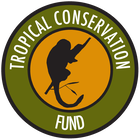In an era dominated by consumerism, the hidden cost lies in the alarming decline of global biodiversity. Beyond the glossy packaging and convenience of modern products lies a profound impact on the planet's ecosystems. Deforestation, pollution, and overexploitation are direct consequences of our insatiable consumption patterns, pushing numerous species to the brink of extinction.
The loss of biodiversity not only threatens charismatic species but disrupts entire ecosystems, affecting vital services like pollination, water purification, and disease control. As consumers, our choices ripple through supply chains, influencing land-use decisions and exacerbating habitat destruction.
From the rainforests of the Amazon to the coral reefs of the oceans, the intricate tapestry of life is unraveling due to our consumption habits. Urgent action is needed to shift towards sustainable practices, embracing eco-friendly alternatives, and supporting conservation efforts. The article explores the intricate links between consumption and biodiversity loss, urging readers to reflect on the ecological footprint of their choices. It calls for a collective responsibility to mitigate the impacts of our consumption-driven lifestyles and preserve the planet's irreplaceable biodiversity for future generations.
Resources
Kitzes, J., Berlow, E., Conlisk, E., Erb, K., Iha, K., Martinez, N., ... & Harte, J. (2017). Consumption‐based conservation targeting: linking biodiversity loss to upstream demand through a global wildlife footprint. Conservation letters, 10(5), 531-538.
Wilting, H. C., Schipper, A. M., Bakkenes, M., Meijer, J. R., & Huijbregts, M. A. (2017). Quantifying biodiversity losses due to human consumption: a global-scale footprint analysis. Environmental science & technology, 51(6), 3298-3306.
Machovina, B., Feeley, K. J., & Ripple, W. J. (2015). Biodiversity conservation: The key is reducing meat consumption. Science of the Total Environment, 536, 419-431.
Liu, J., Daily, G. C., Ehrlich, P. R., & Luck, G. W. (2003). Effects of household dynamics on resource consumption and biodiversity. Nature, 421(6922), 530-533.
Díaz, S., Zafra-Calvo, N., Purvis, A., Verburg, P. H., Obura, D., Leadley, P., ... & Shaw, M. R. (2020). Set ambitious goals for biodiversity and sustainability. Science, 370(6515), 411-413.
The loss of biodiversity not only threatens charismatic species but disrupts entire ecosystems, affecting vital services like pollination, water purification, and disease control. As consumers, our choices ripple through supply chains, influencing land-use decisions and exacerbating habitat destruction.
From the rainforests of the Amazon to the coral reefs of the oceans, the intricate tapestry of life is unraveling due to our consumption habits. Urgent action is needed to shift towards sustainable practices, embracing eco-friendly alternatives, and supporting conservation efforts. The article explores the intricate links between consumption and biodiversity loss, urging readers to reflect on the ecological footprint of their choices. It calls for a collective responsibility to mitigate the impacts of our consumption-driven lifestyles and preserve the planet's irreplaceable biodiversity for future generations.
Resources
Kitzes, J., Berlow, E., Conlisk, E., Erb, K., Iha, K., Martinez, N., ... & Harte, J. (2017). Consumption‐based conservation targeting: linking biodiversity loss to upstream demand through a global wildlife footprint. Conservation letters, 10(5), 531-538.
Wilting, H. C., Schipper, A. M., Bakkenes, M., Meijer, J. R., & Huijbregts, M. A. (2017). Quantifying biodiversity losses due to human consumption: a global-scale footprint analysis. Environmental science & technology, 51(6), 3298-3306.
Machovina, B., Feeley, K. J., & Ripple, W. J. (2015). Biodiversity conservation: The key is reducing meat consumption. Science of the Total Environment, 536, 419-431.
Liu, J., Daily, G. C., Ehrlich, P. R., & Luck, G. W. (2003). Effects of household dynamics on resource consumption and biodiversity. Nature, 421(6922), 530-533.
Díaz, S., Zafra-Calvo, N., Purvis, A., Verburg, P. H., Obura, D., Leadley, P., ... & Shaw, M. R. (2020). Set ambitious goals for biodiversity and sustainability. Science, 370(6515), 411-413.
